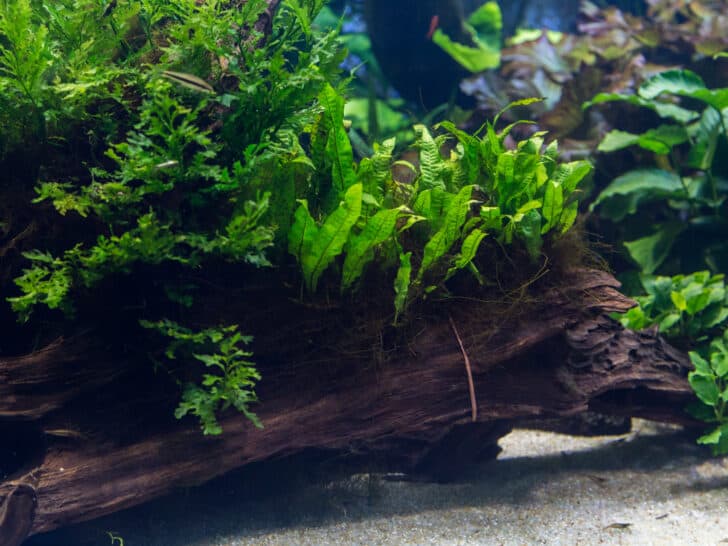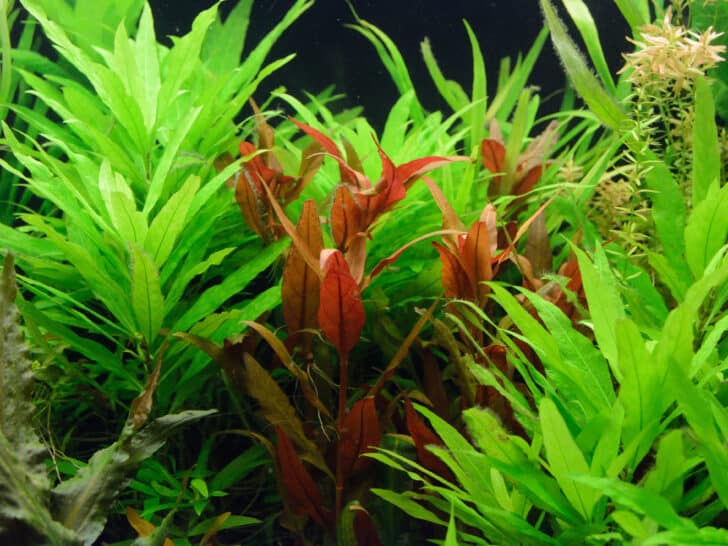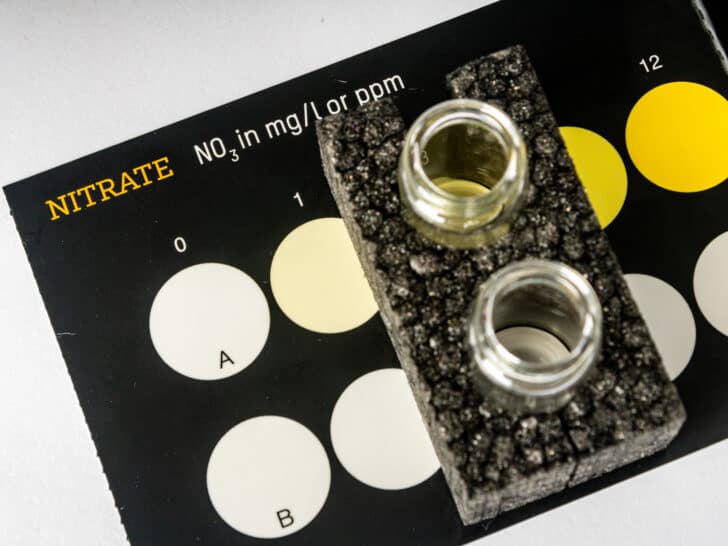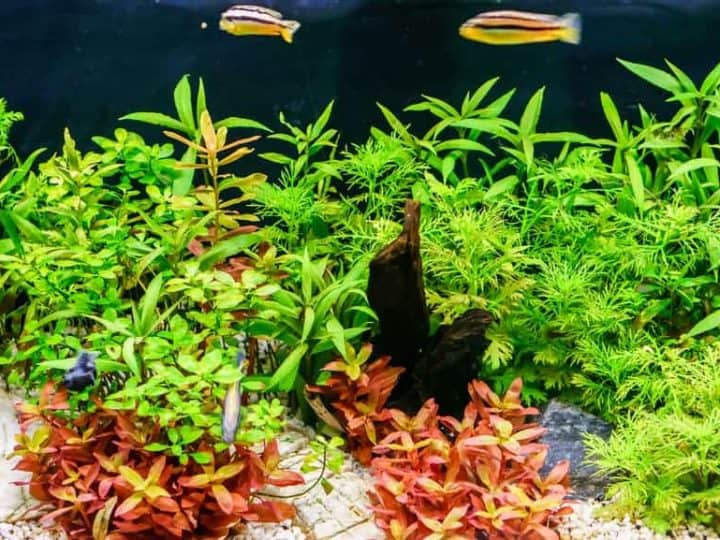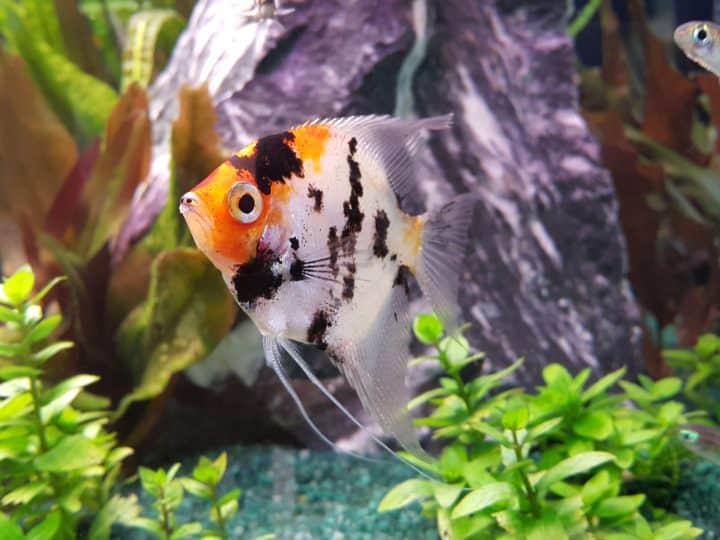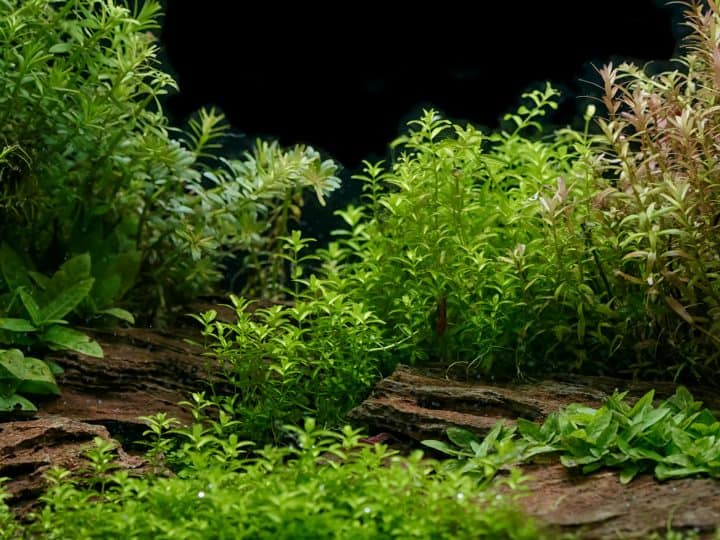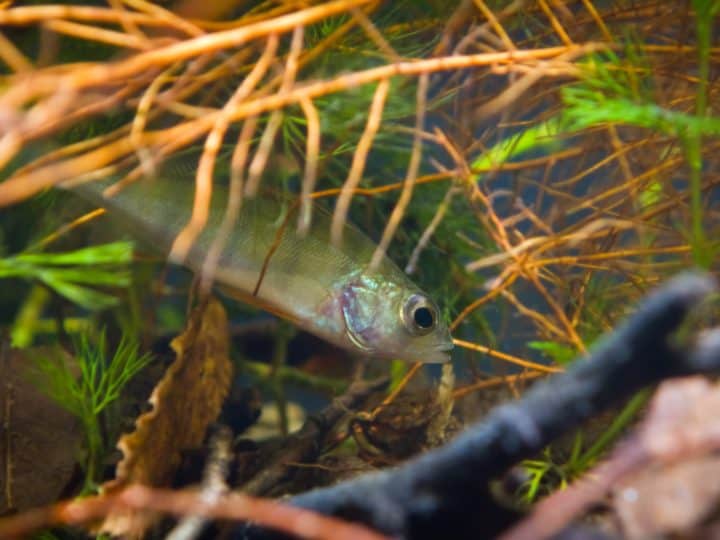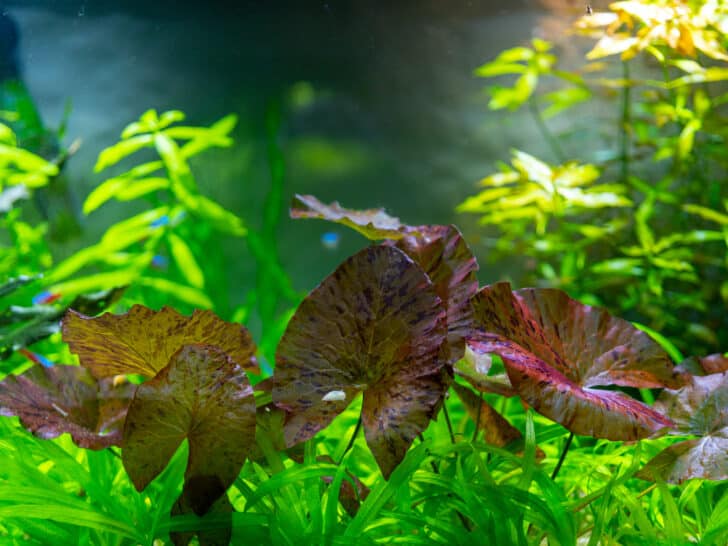There are several benefits to live plants in an aquarium. I knew that. But I wondered: do live plants also absorb ammonia? Given that even the slightest amount of dissolved ammonia is bad for the health of fish.
Quick Answer
Aquarium plants absorb and remove harmful ammonia from the tank. Aquarium plants also harbor beneficial bacteria which can break down ammonia, therefore benefiting your fish. Aquarium plants also have other benefits, such as producing oxygen and providing your fish with a natural environment.
Today, I’m going to talk about why aquarium plants are beneficial for your tank in terms of ammonia removal and control. Keep reading to find out exactly why the aquarium plants are so beneficial for your tank.
Do Aquarium Plants Absorb Ammonia
If you know anything about aquariums and the health of your fish, it’s that ammonia can be toxic.
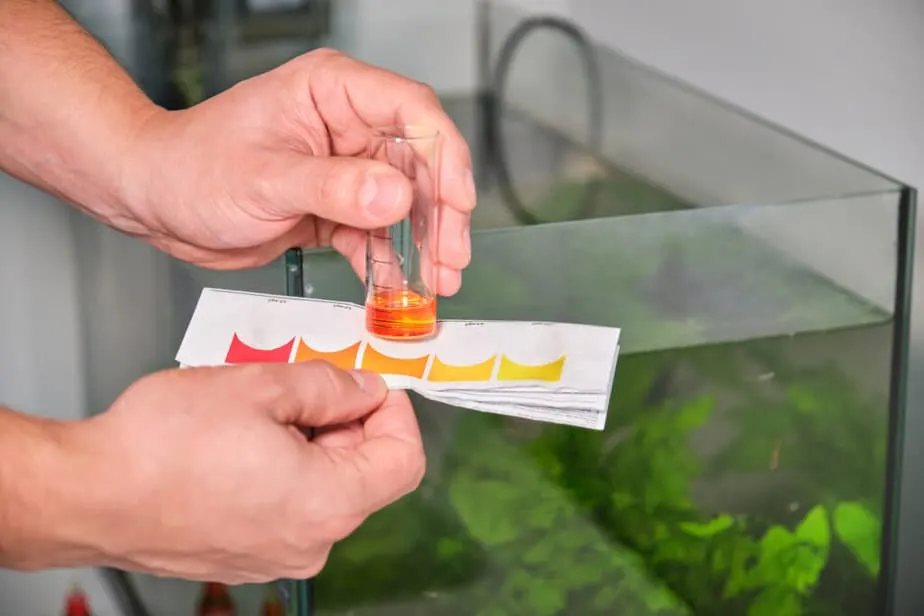
Even low levels of ammonia can be very harmful to your fish, and in many cases lead to death.
This is why it is so important that you keep ammonia levels at a minimum.
This is mostly done through the use of biological filtration, your aquarium filter, but aquarium plants make a difference as well.
What is Ammonia – How is it Produced in an Aquarium?
Technically speaking, ammonia is an inorganic compound, a combination of nitrogen and hydrogen.
In a fish tank, ammonia is formed through the metabolism of protein. When fish digest food and metabolize it, ammonia is produced, which is then excreted through their waste.
In other words, most of the ammonia in your fish tank comes from fish feces.
Ammonia is also produced when organic matter in the tank decomposes, which could be plant matter and uneaten fish food.
It’s interesting how fish produce a lot of ammonia, but that is also very toxic to them.
Why Do Plants Absorb Ammonia?
Plants absorb ammonia for one simple reason, it acts as a nutrient.
Plants require nitrogen in order to properly grow. However, ammonia can also be used as a source of nitrogen.
Plants absorb ammonia from the water and convert it into organic molecules that contain nitrogen, which they can then use for food.
Why is Ammonia Bad for Fish Tanks?
Ammonia is extremely detrimental to your fish, and the reason for this is because a buildup of it can cause a variety of health issues.
This includes, but is not limited to, massive amounts of stress, damage to the gills and internal organs, and eventually death.
Therefore, it is essential that ammonia is regularly removed from fish tanks and its levels are kept under control, or else your fish will die without a shadow of a doubt.
Other Ways to Remove Ammonia from Aquariums
OK, so plants are a great way to remove ammonia from your aquarium. However, there are also other proven methods of reducing ammonia, so let’s take a quick look.
Biological Filtration
Biological filtration is characterized by a variety of beneficial bacteria that quite literally eat and break down ammonia.
Through a relatively complex scientific process, ammonia is oxidized and turned into nitrite by ammonia oxidizing bacteria. This nitrite is then converted into nitrate by nitrite oxidizing bacteria, with nitrate being relatively harmless to fish.
Keep the Tank Clean
A lot of the ammonia in a fish tank forms from fish waste, uneaten food, and decaying plant matter.
Therefore, make sure that you always clean up under two food, decaying plants, and fish waste.
A good way to remove a lot of this solid debris from your fish tank is with a good filtration system that includes mechanical filtration.
Mechanical filtration removes solid debris such as fish waste and uneaten food from the water.
Regular Water Changes
Perhaps one of the easiest ways to remove ammonia from your aquarium is to engage in regular water changes.
That said, you should be changing around 30% of the water in your aquarium every week either way.
Don’t Overfeed Your Fish
The other way to prevent too much ammonia from building up in your fish tank is to not overfeed your fish.
If you overfeed your fish, they’ll produce much more waste, and they’ll probably leave uneaten foods floating around in the water as well.
Don’t feed your fish more food than they require.
The Benefits of Live Aquarium Plants
Now that we know that aquarium plants indeed reduce ammonia levels in the water and why this is so important, let’s take a look at some of the other benefits that live aquarium plants have for your tank.
Plants Absorb Ammonia, CO2, and More
Besides absorbing ammonia, aquarium plants also absorb carbon dioxide and other compounds from the water.
Plants may also absorb heavy metals and other contaminants from the water which may otherwise be harmful to your fish.
Live plants act as fantastic filtration units, therefore also taking the load off of your normal filter.
The less your filter has to work, the longer it should last for, and the less often you’ll have to replace filter media.
They Produce Oxygen
Perhaps one of the biggest benefits of live aquarium plans is that they produce oxygen.
Just like the air that we humans breathe comes from the trees and plants above the surface, the air that your fish breathe inside of an aquarium comes from the aquarium plants, at least in part.
Yes, the water itself also contains oxygen, plus you might be using an air stone, but aquarium plants certainly don’t hurt.
The Produce a Natural Environment for Fish
Yet another benefit of using live plants in your aquarium is that they produce a very natural environment for your fish.
Fish are easily stressed out, so being able to mimic their natural environment as closely as possible is important. After all, you want to give your fish a good home.
They Harbor Beneficial Bacteria
The final benefit that live aquarium plants have for your tank is that they are fantastic for harboring beneficial bacteria, which brings us back full circle to the issue of ammonia.
Beneficial bacteria like to grow on aquarium plants, and as discussed above, beneficial bacteria are required to break down ammonia into less harmful compounds that won’t hurt your fish.
Therefore, the more live plants you have in your tank, the more beneficial bacteria are present, the more ammonia is regularly removed from the water.
The Best Aquarium Plants for Absorbing Ammonia
There are some aquarium plants that are better known for absorbing high levels of ammonia than others.
Some of the best plants you can get on this front include the pothos (AKA golden pothos), the Amazon sword, hornwort, Amazon frogbit, and Java moss. In case you’re looking for some other beginner friendly aquarium plants, check out this list!
Conclusion
If you want to take the load off of your aquarium filter and ensure that your fish tank has ideal ammonia levels that don’t harm your fish, then having a variety of live plants present is very beneficial.
Furthermore, live aquarium plants also have many other benefits for your tank, such as producing oxygen, harboring beneficial bacteria, and just providing your fish with a natural and cozy environment as well.
The only thing left for you to do now is to choose the right aquarium plants for your tank!

